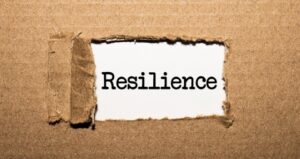
Understanding the Impact of Workplace Incivility in Higher Education
“Did you hear that another team member, someone we all knew and worked with, quit today?” said a colleague. “Isn’t this the third one since


“Did you hear that another team member, someone we all knew and worked with, quit today?” said a colleague. “Isn’t this the third one since

Attributes of work environments that have the greatest influence in determining whether an environment becomes hostile or not is why an organization should start implementing

Tough times are no stranger to higher education—financial challenges, enrollment declines, mental health issues, and the erosion of tenure to name just a few. If

Unlike faculty who for the most part work with students and scholars within their subject matter area, chairs are responsible for representing the department in
It’s been said that no one dreams of someday becoming an academic administrator. It’s a tough job that’s only gotten more challenging as budgets shrink, public scrutiny rises, and responsibilities continue to grow. But what does it really take to be an effective leader?
When faced with a problem or challenge within your unit, your first inclination might be to immediately look for solutions. Makes sense, right? But when the problem or challenge comes from an individual or the way individuals interact—which is often the case—those who feel they are being viewed as problems to be solved might not appreciate being labeled as such. A better approach is a practice known as appreciative inquiry, which builds on strengths and what is working well to bring about positive change.
Difficult conversations are inevitable in any organization. Understanding how they arise and how they play out can help minimize the disruption without avoiding the issue or alienating those involved.
The faculty members in the chemistry department are confused.
Last semester, the campus teaching center held a series of workshops to get faculty more familiar with the anti-plagiarism tool that the university adopted and linked into everyone’s online course environment. The teaching center showed everyone who attended the training sessions 51 ways that they could help to catch cheaters, based on research conducted by two researchers at the University of Texas’ Telecampus (McNabb and Anderson, 2009). But the 51 strategies are not why the chemistry faculty are confused.
Incivility and lack of collegiality are on the rise in institutions of higher education (Cipriano, 2011). This phenomenon can range from disputes and tension at one end of the spectrum to violence at the other. There are many departments that suffer from non-collegial, uncivil, and nasty encounters between faculty members, faculty members and professional staff, and faculty members and students.
Curriculum changes or differences of opinion about what should be taught and how it should be taught can create tension in any department. And the budget situation in many departments can add fuel to the fire. Jon Bloch, chair of sociology at Southern Connecticut State University, offers the following points to keep in mind to help manage these conflicts:
Get exclusive access to programs, reports, podcast episodes, articles, and more!